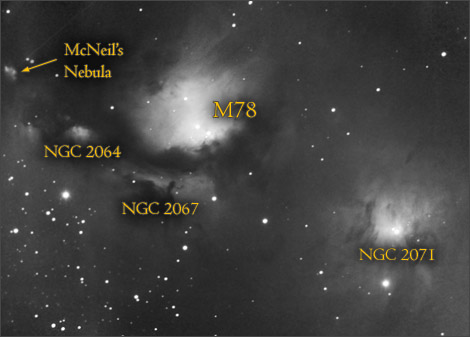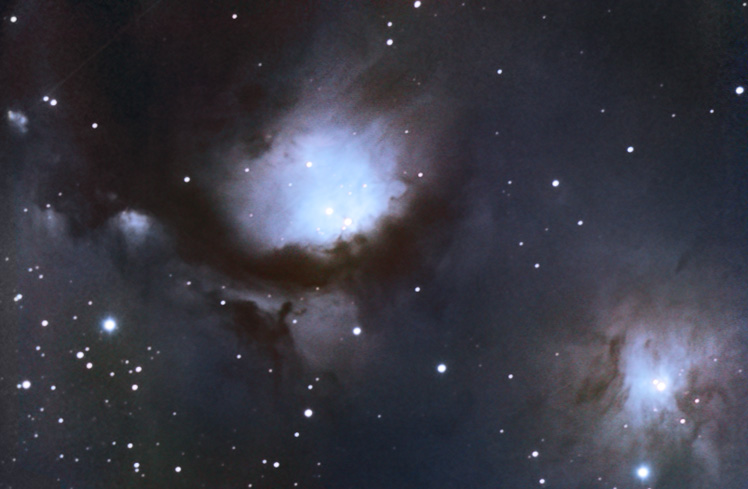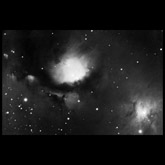Discoveries in astronomy are common. It is not unusual to read an article about the discovery of a new planet or a new star or a new phenomenon. Almost all of these discoveries are made by professional astronomers and funded by governments and universities.
But it was not always so. M78 was discovered in 1780 by Pierre Méchain, an amateur comet-hunter who stumbled on many bright nebulae and passed their location on to Charles Messier for inclusion in his famous catalog. Méchain and Messier both discovered dozens of deep sky objects, but in 1786 an amateur astronomer by the name of William Herschel surpassed them both when he published a list of one thousand new nebulae and star clusters. Herschel had discovered them by systematically sweeping the sky with his giant telescope.
With his larger telescope, Herschel was able to discover faint nebulae that eluded Méchain and Messier, and among those thousand was a nebula near M78 that he cataloged as H 4.36 and that is now known as NGC 2071. Eventually, Herschel's General Catalog grew to encompass more than 2500 objects. With additions by his son John, Herschel's catalog ultimately became the basis for the New General Catalog, a catalog of deep sky objects that is still used by professional astronomers today.
Today there is no longer a need for amateurs to develop catalogs. Professional efforts such as the Sloan Digital Sky Survey, which is designed to photograph the entire sky, are both more comprehensive and more accurate than any amateur attempt.
Nevertheless, sometimes amateurs still make interesting discoveries. On January 23rd, 2004, amateur astronomer Jay McNeil took a picture of M78 and noticed something unusual: His picture showed a nebula that did not appear in any catalog or even in the Digital Sky Survey. McNeil had discovered a new variable nebula, possibly illuminated by a new-born star or perhaps a stellar eruption.
Professional astronomers will eventually discover the true nature of McNeil's Nebula, but it's nice to know that amateurs can still contribute to astronomy. Méchain, Messier, and Herschel would be proud.

Imaging Notes
While M78 itself is easy to capture the surrounding nebulae are much more difficult. The dust lane separating M78 and NGC 2067 is very prominent and has a lot of interesting detail. Harder to bring out is the dark cloud on top of NGC 2067. NGC 2071 is also relatively easy, but you will need to spent a lot of time capturing the faint nebulosity between it and M78 itself. The deeper you go, the more detail you will see.
If you can, try to capture the whole region from NGC 2071 to McNeil's Nebula. But if your field of view is too small, concentrate on everything except NGC 2071.
M78 is a reflection nebula, so it appears sky blue. The dark nebulae have a hint of deep red.

